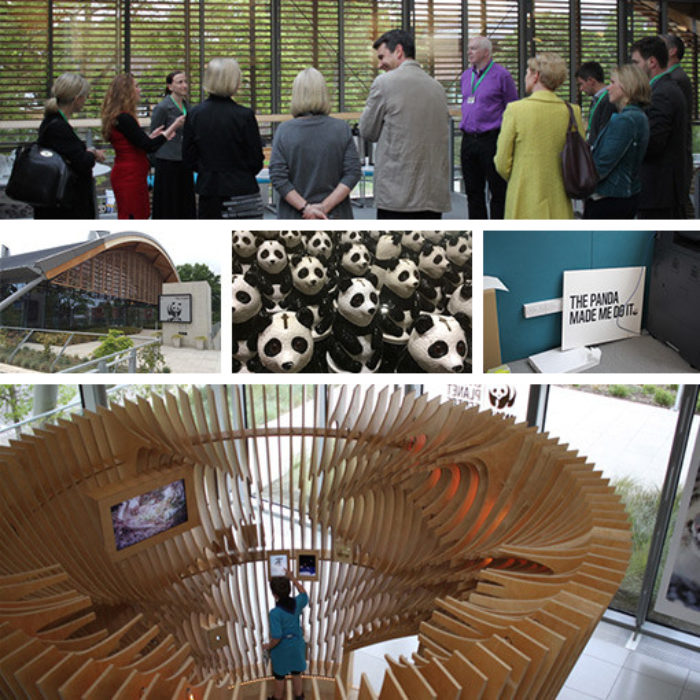Become an innovator (part 8): Harvest insight
This blog series explores the shared characteristics of innovative people and organisations, with a particular focus on what innovators think, feel, believe and do. We’re also looking at how we can all do more to encourage and create innovative workplace cultures.
The eigth of the characteristics shared by all those with a spirit of innovation is to harvest insight from real life and from stories.
“Eureka!”
Archimedes (from the Greek for ‘I have found it!’)
Insight leads to action
What is insight? It’s that fascinating little nugget of information that triggers action. Here are a few examples.
Studies showed that a woman is 47% more likely to be seriously injured in a car crash than a man, and yet, for decades, crash-test dummies were only designed to represent the average male figure. This fact led (finally) to the use of female crash-test dummies, which were introduced in the US in 2011.
Larry Page’s insight connected internet search to the traditional way in which academics rank studies by the number of citations they receive. That insight led to an algorithm that helped Google become the global leader in search.
Gary Slutkin, Professor of Epidemiology and Public Health at the University of Illinois at Chicago, realised that gun violence spreads like an infectious disease. The evidence showed that people who have observed violence are 30 times more likely to commit it. This insight led him to initiate a global charity called Cure Violence, which teaches people to talk someone down, distract them, change the setting, change their perspective and save lives.
A little luck
Sometimes, insight has an element of serendipity. In 1980, West Germany made it mandatory for motorcyclists to wear helmets. Over the next six years, motorcycle thefts fell by two thirds. The reason was simple: inconvenience. Thieves could no longer decide to steal a motorcycle on the spur of the moment1. So, a product introduced to reduce accidents also reduced thefts. Who knew?
Here is Alexander Fleming on his discovery of the antibiotic properties of penicillin: “One sometimes finds what one is not looking for. When I woke up just after dawn on September 28th, 1928, I certainly didn’t plan to revolutionize all medicine by discovering the world’s first antibiotic, or bacteria killer. But I suppose that was exactly what I did.”
And sometimes you have the insight without the evidence. As Jeff Bezos said: “If you had gone to a customer in 2013 and said, ‘Would you like a black, always-on cylinder in your kitchen about the size of a Pringles can that you can talk to and ask questions, that also turns on your lights and plays music?’ I guarantee you they’d have looked at you strangely and said, ‘No, thank you’.”
Insight from stories
Stories can reveal insights by sharing a human experience. They can reveal a strongly held belief that we may not be able to consciously express. They give us moments in space and time that act like coat racks for our memories. They create empathy as we put ourselves into the lives of others. They also command attention.
I recall in the 1990s conducting deep research into the views of UK water sector customers. All the research and insight we could draw on was condensed into a single vox pop comment by a young man in Manchester, who said “You charge me far too much”. It made the case, in a single moment, for a programme to raise awareness of the value of water in our daily lives.
Innately human
Our need to create stories is hard-wired into our humanity. In fact, we have a need to make our whole lives into a story. The brain has a default mode which creates a narrative for our lives, incorporating our lessons from the past into our plans for the future. It even has a physical location: the medial prefrontal cortex of the brain. This area is so important, it uses 20% of our calories, even when we’re apparently doing nothing2.
Stories can also be the enemies of innovators. “The odds are stacked against the preferred future, because the present is anchored to the past by a myriad of stories,” says storyteller Geoff Mead. “Our view of the world and what is possible and desirable is shaped by the ‘big stories’ of our time.”3
Sometimes, the only way of challenging strongly held beliefs is to tell new stories. Telling a different story can reframe our understanding, our beliefs and our actions. In this way, stories don’t just provide insight for innovators, but are a powerful acceleration strategy to new futures.
Learn more
This is part eight of a series of planned articles on the characteristics of innovative people and organisations. The next instalment is coming soon, but in the meantime you can explore the full set in detail, by downloading our free report Innovation for Everyone.
And if you want a chat about how to create a more innovative culture in your organisation, just drop me a line at John.Drummond@CorporateCulture.co.uk
- Adam Kucharski, ‘The Rules of Contagion’, Wellcome Collection, 2020
- New Scientist: ‘Vacant Mind, Busy Brain’
- Geoff Mead, ‘Telling the Story: The Heart and Soul of Successful Leadership’, 2014




